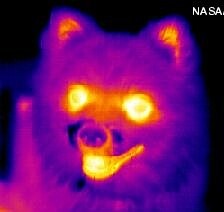
Have you ever wondered how the Smart Baby Monitor can see in the dark? Night vision cameras are fairly common nowadays, used for security or in some television programs, but the technology behind it is nonetheless fascinating.
Like most other commercial sensors equipped with night vision capabilities, the Smart Baby Monitor’s technology relies on near-infrared light. “Infrared light” is a sort of light invisible to the human eye that is located “beyond” the color red and near-infrared designates the type of infrared closest to that visible spectrum. In scientific terms, near-infrared light has a wavelength between approximately 2,500 and 750 nanometers. For reference, visible light extends from app. 760 nanometers to 380 nanometers (thank you Wikipedia).
Near-infrared comes mostly for the same sources as regular light: wherever there is visible light that humans can see, the invisible infrared light is almost always present and where there is no visible light, near-infrared light will be mostly absent as well. Therefore, in order to see in a dark room using infrared technology, we need to create an infrared light source first. Dedicated infrared LEDs placed near the camera turn on automatically when the sensor detects that the level of visible light in the room is very low.

The LEDs light the room in near-infrared, like a regular light bulb would, except invisible to the human eye. This infrared light however is perceptible for the electronic eye of the camera that sends it back to the iOS device for you to see. The image is in black and white because colors as we know them simply don’t exist in infrared. The process is called “active infrared” and it explains, for instance, why you can see shadows on the WithBaby app’s display in what’s supposed to be a dark room.



